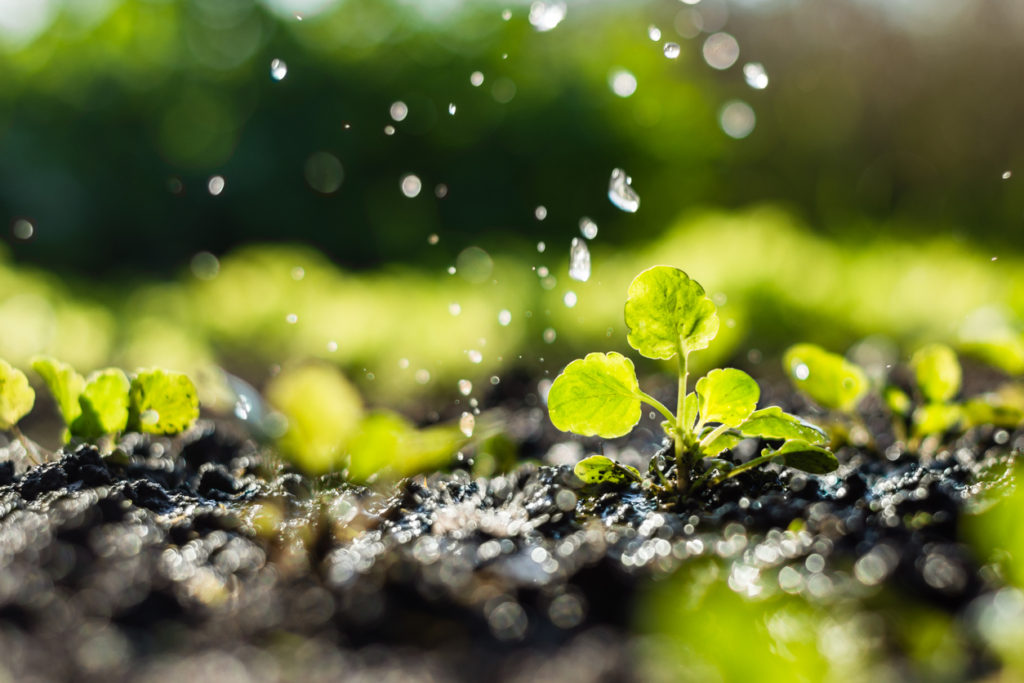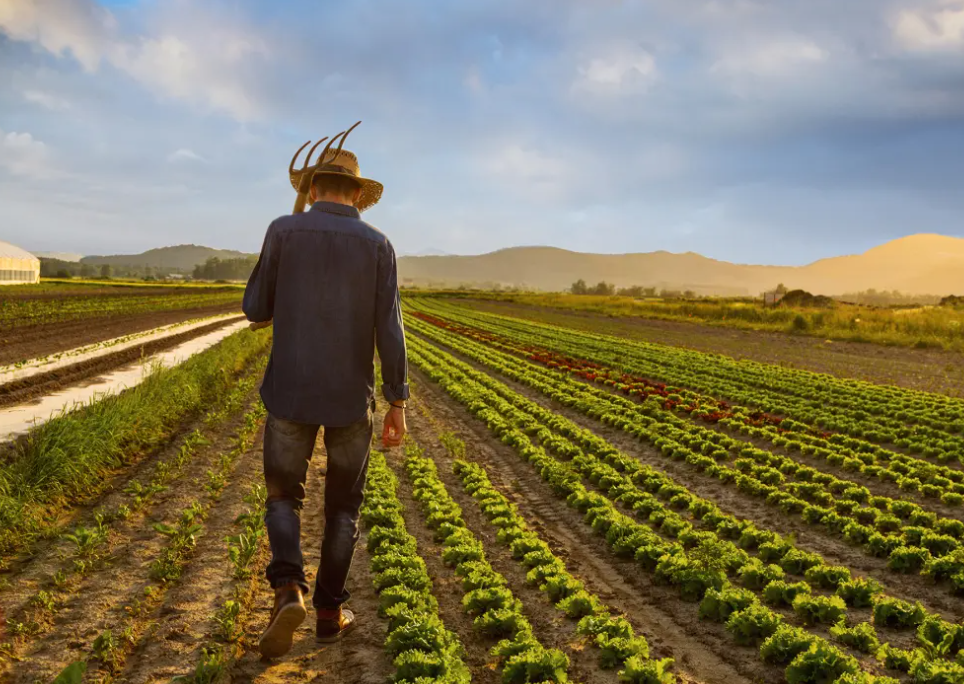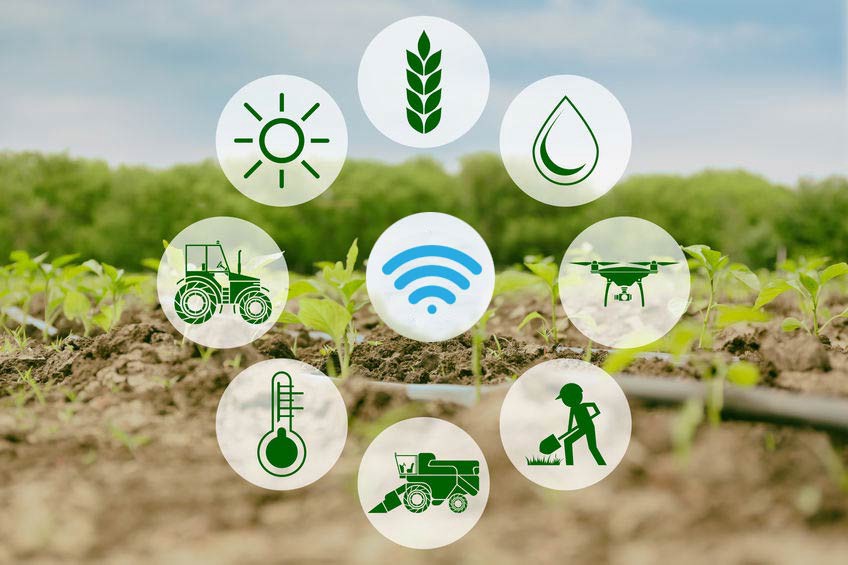Agriculture & AI - Can AI help us avoid the coming disaster?
In the last decade, AI has evolved to become one of the world’s go to solutions for addressing the myriad of problems we face today. Agriculture and food supply challenges faced with a growing global population is a fertile place to apply AI for innovative solutions.
Indeed, the rapid industrialization of agriculture can be attributed to artificial intelligence to a certain extent. According to UN projections, the population will increase from 7.5 billion to 9.7 billion by 2050 resulting in more pressure on land resources. In order to meet this population growth, an additional 4% of agricultural land will be required at current production levels by 2050.
According to the same survey, food production will have to increase by 60% to feed an additional two billion people. Naturally, traditional methods are not enough to keep up with the high demand. AI based solutions are emerging to help meet these agro-technical demands.
However, beyond the need to meet the food demands of a growing global population, current events threaten the existing global food supply. As a result, scientists will naturally look to AI based innovation to be an unlikely hero in the story of conflict that is playing out on the world stage.
Sadly, every story comes with its own villain. The villain right now is the Ukraine-Russia conflict roiling global food supply chains. It is a common and general misconception that war is contained between the battling countries; and the rest of the world remains untouched by consequences, aftershocks, and the ravages of a war.
One of the most relatable examples of ancillary impacts from global conflict is the related volatility of oil prices worldwide observed during the various conflicts that have occurred over the past 30 years. In the same way, the world anticipates the same effect will be observed on the global food supply in the coming years, with deadly consequences. Only the future will tell whether we will face it in crippling ripples or disastrous waves.
As of March 2022, rising food prices and shortages in staple crops are already causing havoc in Near East and South Africa. According to the UN’s International Fund for Agricultural Development (IFAD), a quarter of global wheat comes from Russia and Ukraine and 40% of the wheat and corn from Ukraine go to the Middle East and Africa. These regions are already grappling with hunger issues and increasing prices and shortages is pushing the most vulnerable populations further into poverty. Secondly, Russia is also the world’s largest fertilizer producer. Even before the conflict, spikes in fertilizer prices last year contributed to a rise in food prices by about 30 percent.
The consequences of this conflict can be seen all around the world:
- Fuel price rises have pushed up the cost of energy and transportation in Somalia, where an estimated 3.8 million people are already food insecure. This has a disproportionate impact on poor small-scale farmers who rely on irrigation-fed agriculture powered by small diesel engines to survive in the face of irregular rainfall and a prolonged drought.
Wheat and sunflower oil prices have risen in Egypt as a result of Egypt’s reliance on Russia and Ukraine for 85 percent of its wheat and 73 percent of its sunflower oil supplies. - Food shortages or more price spikes will exacerbate an already terrible situation in Lebanon, where 22 percent of people are food insecure. The country imports up to 80% of its wheat from Russia and Ukraine, but due to a blast in Beirut’s port in 2020 that destroyed the country’s major grain silos, it can only keep roughly one month’s worth of the crop at a given time.
- The depreciation of the Russian ruble has affected Central Asian countries that rely on remittances brought home by migrant workers in Russia. Remittances account for more than 31% of GDP in Kyrgyzstan, with Russian remittances accounting for the majority. Migrant families in rural areas rely on remittances for food, education, and other necessities.
So, now the important question is how to stop these ripples from turning into waves. The simple answer is stop the conflict. But that isn’t as simple as it is to say. Perhaps, the next best solution for both short term and long term is using Artificial Intelligence. Agricultural AI, originally aimed to scale as populations grow, has several technologies that can help us overcome such problems.

Helping create the perfect crop
Deep learning AI are able to comprehend the complicated genetics of plants, allowing for more efficient plant breeding making them more efficient in producing food. Researchers can use AI technologies like FarmView to figure out the best genetic makeup for creating seeds that provide the highest yield, most nutrition, and the most disease-resistant strains of staple crops. An AI model will be given all of the growth, genetic, and environmental data obtained during the research to process. AI algorithms are superior to humans at reviewing all of the variables and varieties in order to find patterns and insights faster (Mar, 2021).

Maximizing current output
In today’s world, an alarming quantity of food up to 50% ends up in the trash. TOMRA Sorting Solutions’ AI-powered equipment analyzes and sorts food into “good” and “poor” categories. It can examine food, like a tomato, to choose the best method to use it, just like a human. One fruit might not make it to the salad plate, but it’s ideal for making ketchup (Marr, 2021).

Precise application of herbicide
Instead of using a “spray and pray” method to herbicide application, Blue River’s LettuceBot is using over a million photos of 5,000 young plants to learn how to tell the difference between a weed and a lettuce sprout. When it identifies a weed, it sprays it directly resulting in a 90 percent reduction in losses (Marr, 2021).

Plant disease
Deep learning AI is being utilized to assist machines in determining crop health. Farmers throughout the world will be able to use this AI through an app that can diagnose an issue so that they may take action before the losses become catastrophic (Marr, 2021).

Internet of Things for agriculture
One of the reasons American farms are so productive is because of sensors and systems that gather and analyze crop-related data. According to OnFarm, the development of IoT devices will generate 4 million data points each day by 2050. All of this information, from soil conditions to crop health and climatic change, will be useful for deep learning AI and its eventual application in agriculture (Marr, 2021).

Early warning signs of a crisis
The Nutrition Early Warning System (NEWS) employs big data and machine learning to detect areas at danger of food shortages as a result of drought, rising food costs, and crop failure. For instance, it has already been used to alert farmers in Colombia that a drought is approaching and to advise them to forgo planting season. When the drought hit, the 170 farmers that took the advice and skipped planting season saved money on their planting costs (Marr, 2021).
While war and conflict always leave devastation in their wake, we have the ability to use AI based technology to reduce the impact as much as possible. If these techniques can be turned toward the immediate need to ramp global food production and distribution, perhaps we can avert an oncoming tragedy. Of course, the agricultural industry will need to shift, and farmers’ expertise of their “field” will need to be converted into AI training, which will require more technical and educational investments in the agriculture sector.
